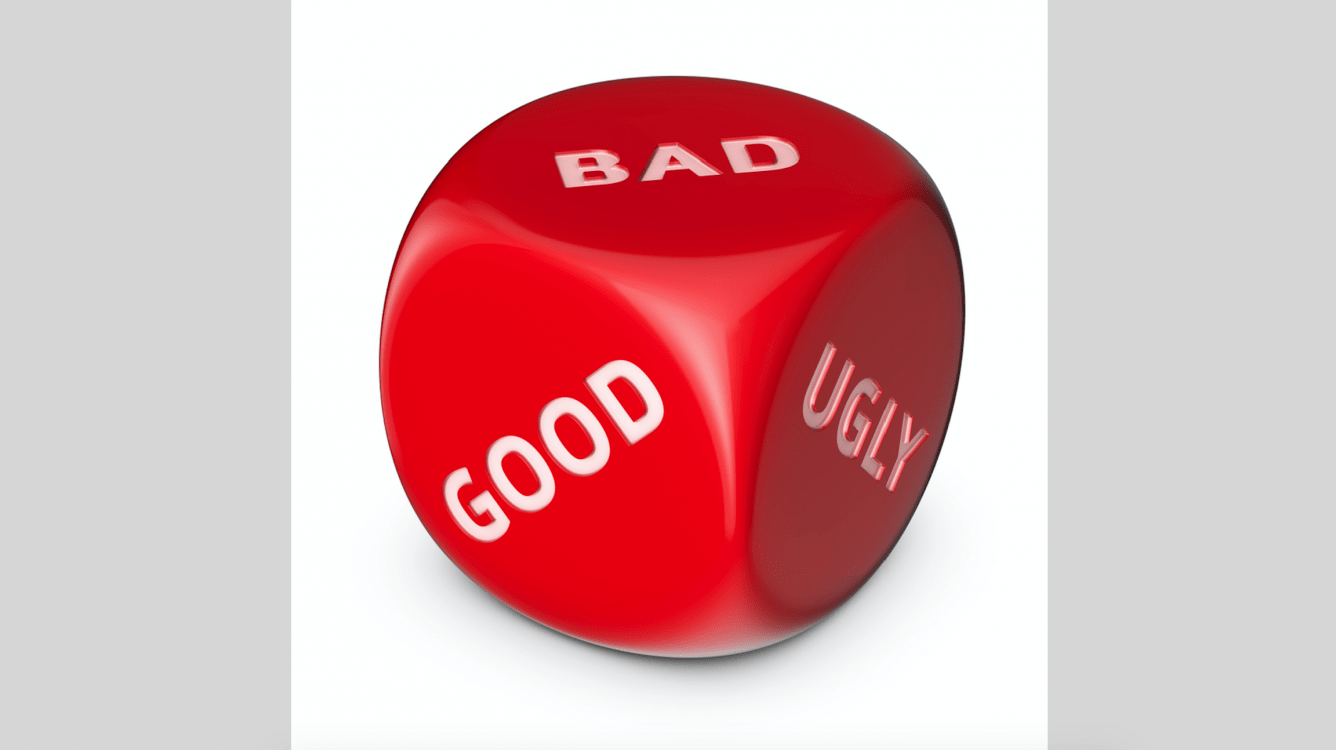
The Good, The Bad, And The Ugly
The Chess.com member Olaspecial wrote:
“I am keen to become Nigeria’s next titled player (I hope this makes you smile) and I believe you can help me get there. I am diligent and I have been working hard at developing my opening repertoire, tactics and endgame. There are several elements of my game that need developing and I just need guidance. Can you give me some advice?”
I was looking at games by players in the 1000-to-1500 range for a while (people in that rating group shouldn’t worry since I will continue looking at your games -- I won’t forget you!). My last two articles took us up a notch or two with Chess Patterns Are for Everyone and A Monster Attack and Key Endgames. Mr. Olaspecial’s games take us a bit higher — he’s in the in the 1800-to-1900 range.

So Mr. Olaspecial, let’s take a look at a few of your games and see “The Good, the Bad, and the Ugly” (a title from a famous Clint Eastwood movie).
I am going to be very honest with Mr. Olaspecial because he aspires to be a really good player. Hence the “bad & ugly,” which all serious chess students run afoul of.
THE GOOD
THE UGLY
A very poor opening for White. In fact, Black is better after only seven moves! Mr. Olaspecial, if you want to climb to the master level (or beyond) you need a solid opening repertoire. This kind of opening will hold you back and, to make matters worse, install bad habits into your overall play.
This doesn’t mean that you have to memorize dozens of opening books. It does mean that you need to find openings that suit your style/temperament, study their common pawn structures and the common positional and tactical themes that often appear in those openings, fully understand the plans that make your openings desirable, and memorise a few basic lines.
As you play tons of games with those openings, your knowledge of them will expand over time (memorize more lines game by game, but make sure it’s a natural process). By playing garbage systems, you are wasting important experience that could and should have strengthened your opening play.
THE BAD
In the French Defense, White usually strives to create a solid pawn center, while Black does everything he can to smash it (...c5 and ...f6 are common). White DOES want to play d4, but not until that point is well protected and the hole on e3 (which appears after d2-d4) isn’t going to crash and burn White’s position. Thus 9.c3 f6 10.Na3 when White will continue with Nc2 and d2-d4.
Note in that case White’s c2-knight not only protects d4, but it also covers the b4-square AND the e3-square.
THE GOOD
Thanks to Black’s failure to grab White by the throat, White managed to slowly get back in the game and by move 28 the following position occurred:
But what about this position? See if you can solve it:
OVERALL
* Mr. Olaspecial, you need to create a complete repertoire that suits you. Knowing the strategic ideas in your openings is critical, otherwise you’ll just be moving pieces here and there without really knowing what you should be doing.
* You showed your tactical chops in coming back from a very poor French Defense. The ability to turn a game around tactically is a very good sign.
* In the French Defense game you created way too many targets/weaknesses. Giving Black the e3-square was near suicide, while tossing your d-pawn was also unfortunate. You need to train yourself to notice these things (in this case to notice that pushing the pawn from d2-d4 turned the e3-square into a painful hole).
* I was really impressed (in our initial game) by your ability to calmly build your position and make sure all your weak points were covered. You only went for the kill when everything was safe and sound. Bravo! In some of your other games (The French and others which I didn’t use here) you failed to do this. So think about it and make sure your positions are (as best you can) solid and weakness-free.
* Please remember that this is just a tiny look into Olaspecial’s play. A strong, skilled teacher would highlight other pros and cons of his games and help him vastly improve.
Mr. Olaspecial, I wish you the best in reaching your chess goals. If you want to be a master, you need to play in as many strong tournaments as you can. Sometimes you’ll have a bad result. Don’t view it as a negative! The games you lost are wonderful things that can teach you more than dozens of easy wins.
As for a chess teacher (which you brought up to me in your letter), a great teacher-student relationship is needed. If you find you’re not comfortable with a particular teacher, fire him and look elsewhere. Even if the teacher is a famous grandmaster, if there’s no chemistry, dump the guy! Eventually you’ll find just the right coach.

